
What follows is a series of Facebook posts, mostly self-explanatory, where I returned to listen to the complete cycle of Shostakovich’s string quartets. Revisited over the course of one week in July of 2020, when Covid restrictions had only just been slightly eased, this journey (originally done on and off over a nineteen year time span) was to some extent a poultice to a wound, having not been able to undertake any conducting for some time, let alone any other performing activity (although I did find some outlets, particularly online).
I had reshared the following post; the rest of the entries that follow I’ll let me explain.
3rd July 2020
Since I was a child I’ve always enjoyed the epic journey (ask me why sometime, but buy me a drink first), and I find that the rushed way that many try to “know” some of our repertoire doesn’t serve them well in the long run. Schoenberg lamented how much his post-war students didn’t know their repertoire; on the other hand, Glazunov “envied” his student Shostakovich the experience of hearing a great work for the first time.
As I’ve got older I have at times found myself briefly wondering why I’m hearing a work for the first time (such as all of Bernstein’s 2nd Symphony the other day), but I am quickly reminded that the joy of hearing it for the first time is well worth it, and that the joy of discovery is what keeps us young.
“3rd of July, 2013:
Maybe as an appropriate act of futility, I wasn’t able to hear all of the Shostakovich 15th String Quartet the other night; that is until now. Thus ends, again appropriately without any sense of arrival but with growing poignancy (& in the house where it started), my nineteen year journey through the String Quartets of Dimitri Dimitriyevich Shostakovich.”
4th July 2020
Due to my recent shared memory post about the Shostakovich Quartets, I’ve decided to revisit them all over the next week or so.
Let’s go.
Shostakovich String Quartet No.1.
Written within a year of the premiere of the 5th Symphony, Dimitri said that he was trying out the form, resulting in one of his shortest works in this set. He would then continue to write one on average every two and a half years for the rest of his life; if his life had only been that easy.
After buying the Fitzwilliams box set from HMV in the Queen Street Mall (when it existed) in early 1995, I made a point of only listening to the first four quartets throughout that year. I remember being on several tours during that time; the bushland that we passed seemed to react to the introspective tone of many of the movements x
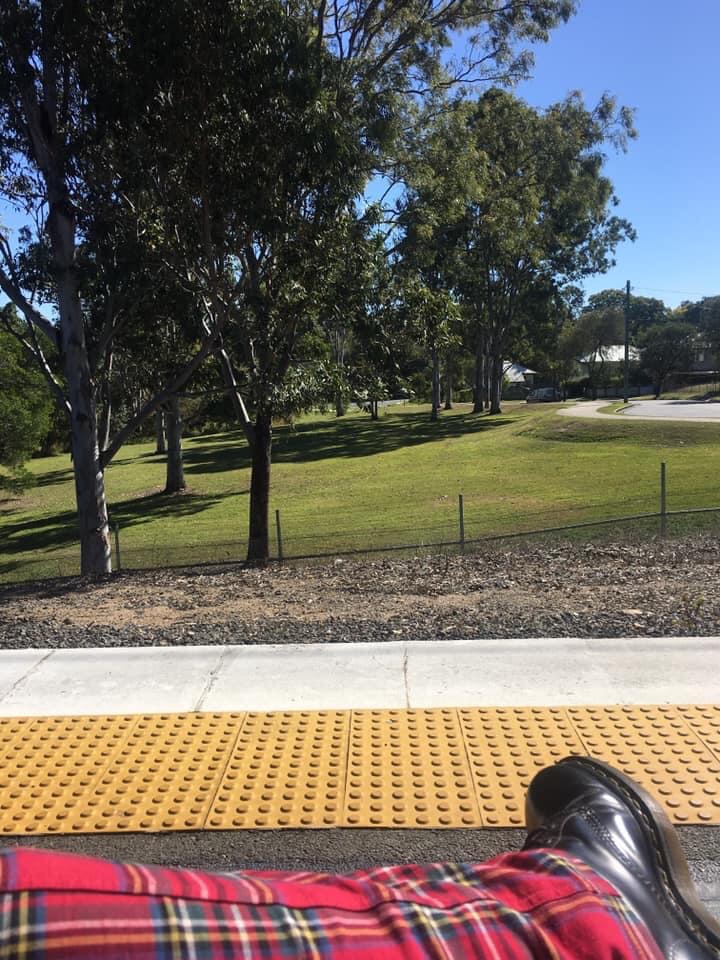
4th July 2020
Shostakovich: String Quartet No. 2
This is the second longest of Dimitri’s quartets, and certainly one with a less intimate voice at times, especially in the 1st Movement.
Written in 1944, it came after the bewilderingly received 8th Symphony. Before I go on, I should point out that it’s my understanding that a quartet concert in the Russia of DS’s time had the same weight as a poetry recital (at one of his poetry recitals, which saw the audience aroused so much, Pasternak let loose as an encore one of his poems that he never dared to write down, as it would have resulted in a one way ticket to the Gulag. I’ll have to revisit the relevant book to remind myself of the repercussions for him and his family as a result of that moment).
I have to say I’d forgotten how painful this work is for me; how close it cuts to the bone. The siege of Leningrad only just over, there is nothing joyful in this work, despite the rhythmic, almost hysterical at times, energy that DS is capable of whipping up throughout the work. For me the bitterness found as the recapitulation starts in the First Movement is just unnerving. Any joy- if there was any joy to be found at the start- is stripped bare, and during this opening movement we’re exposed to Dimitri’s “two against three” patterns, which weren’t overly evident in the First Quartet, along with many instances of what Ian MacDonald referred to as the “betrayal” motif, originating in DS’s, “Lady Macbeth…”.
The skin crawling, bitterness continues in the opening and closing recitatives of the 2nd Movement, but other things are now evident: sorrow and, perhaps more importantly, a sense of vengeance promised for those who are being lamented over.
The ghosts are more present in the Valse, but really come out to play in the folk tune variations of the Finale. The ghostly final variation is ceased by the opening of the movement being restated and, in a manner of transformation similar to the recapitulation of the 1st Movement (via a denser harmonic treatment), we are under no misconceptions as to the dire, gut wrenching, tone of what is being said. Such movements as this, where foreboding is being uttered whilst the rhythms that dominate seem clownish and dance-like, is where we see the Yurodivy in Shostakovich; Something that I believe that he understood in himself, and which he admired in one of his idols, Mussorgsky; And like a Yurodivy, those in power must listen to the fool’s prophecy, for their prophecy might just come true.
Feel free to “play along”. I’ll probably revisit the Third Quartet later today x

4th July 2020
Shostakovich: String Quartet No. 3
So this quartet was written in 1946, just after the outrage that surrounded the 9th Symphony’s premiere (Stalin had wanted a “traditional” 9th, with chorus, soloists and orchestra), and two years before he was denounced and non-personed by Stalin, via Zhdanov and Khrennikov. This was to be the last of DS’s quartets to be premiered during Stalin’s lifetime (he died in 1953).
In both the first and last movements we see the Yurodivy in DS clearly at work, from the bumbling optimism of the 1st Movement opening, to the steely-clenched smile that ascends, complete with jester-like pizzicato chords, at the very end of the last movement. DS also utilises the, “Mahler 4 trick”, in both movements, starting off simply in the 1st, and becoming more complicated as the movement unfolds, only to shut the book on those “real” strains and terrors, as he puts his mask back on (the idea of masks was a constant part of DS’s vocabulary, and the extension of this to puppets was something that would make itself known in his later works). A similar objective is realised at the end of the Finale.
I was reminded as I listened to the 1st Movement of a story that was recounted by one of the Beethoven Quartet, where during a rehearsal they had played one of DS’s quartet movements two different ways: one displaying the sarcasm and bitterness inside of the work; the second way hiding it. Another interesting aside is that, when rehearsing this quartet for the first time, they felt that the opening of the 1st Movement would sound better with the Cello pizz., instead of the gruffness of the opening, arco, crotchets. Once he was present, DS insisted that they be played arco, but agreeing that they would have sounded “better” pizz..
Revisiting the second movement implied for me echoes with the 8th Symphony (III), with the Nocturnal middle section having echoes with the middle section of Shostakovich’s 4th (a work that, this stage in DS’s, wouldn’t be premiered for another fifteen years).
Whilst listening to the 4th (& subsequent segue into the 5th) Movement, I found myself recalling the first time that I had heard his 5th Symphony in concert, some twenty-five years ago. Although I’d known the work at least for nine years prior to that evening in Hobart, it wasn’t until I was actually in the presence of the music in a concert hall that I found myself engulfed fully in the bitterness, the irony, and the tragedy of his music. It came as quite a revelation at the time. It felt as someone would feel when meeting a person for the first time in the flesh, even though you had both created an impressive email trail prior to that first meeting. In the same way, you never forget that element of a person, and it permeates how you read (or, in this case, listen) to everything that follows subsequently. I can’t say that I’ve had that experience with any other composer.
Thanks for reading. This has already been a journey of surprises which, sadly, can’t always be satisfactorily expressed in words (& definitely not in a series of FB posts) x
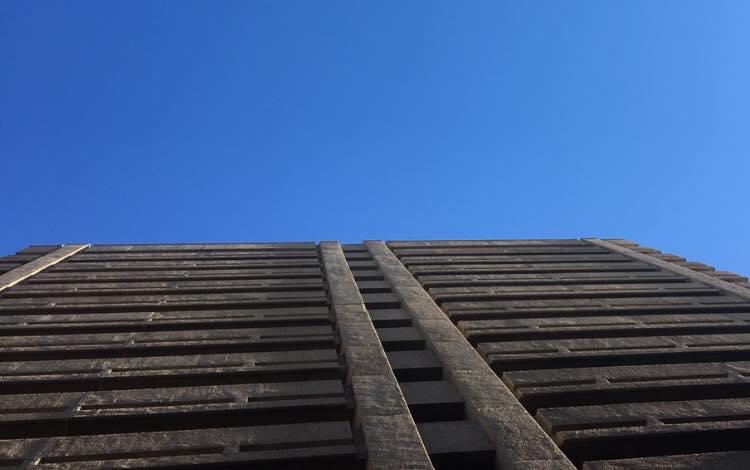
4th July 2020
Shostakovich: String Quartet No. 4
First a postlude: I should have pointed out that the 2nd Quartet was dedicated to Vissarion Shebalin: a fellow composer who was a close friend of DS, and if I remember correctly was highly regarded for his chamber music, hence the appropriateness of the dedication. Now onto the 4th.
This was a “for the drawer” work for DS, written in 1949, at a time when he was still non-personed, although his purgatory conditions had somewhat eased (his son, Maxim, was forced to denounce DS at this point), coming to its peak of torture with his visit to the USA that year, involving the now famous press conference where he was forced to condone the USSR’s condemnation of Stravinsky’s music: an idol of DS’s.
Perhaps more relevant to the 4th- with the Second World War now fading slowly into the distance (along with the persecution suffered by those Russian POWs returning home who were automatically accused of being Nazis sympathisers)- the Soviet government began its persecution of its Jewish population. It’s here that DS’s “for the drawer” works include those with Jewish themes- such as the 1st Violin Concerto, his “From Jewish Folk Poetry” song cycle, and the 4th Quartet. Although he wouldn’t have known it at the time, DS would only have to wait four years, with Stalin’s death in ‘53, before these works would start to see the light of day.
It’s hard to imagine anyone being able to write anything under these conditions. DS’s ability to take the socio-political climate and transfer it into high art (something in tone akin to Orwell’s morality fables, except with the added threat of life threatening repercussions for himself, his family, and associates) is far beyond instilling just admiration, it’s downright heroic. Sometimes in the pre-90’s West, critics found ways to describe DS and his works in bluntly patronising terms (I recall the liner notes to one of the first Western recordings of the 4th Symphony, describing one passage as the inevitable “hysterical” peak that was to be found in DS’s music, as though his works were formulated, and the composer lesser in intellect than the writer).
The 1st Movement is unusual in lacking a development section; its unnerving pedal point sees the almost hidden meanderings out of the major into the minor become more prominent. A vision of the collective screaming in exalted pain is not too far from the imagination.
After the heartfelt 2nd, the 3rd Movement sees DS move into areas of satire, the “betrayal” motif breaking in halfway through the movement. It’s in the Finale, however, that the Jewish influence really comes to the fore, and it becomes apparent how DS feels about their persecution, the work taking on the form of a totentanz. Where an ambiguity had been set previously through moving between major and minor modes in close proximity, DS creates further tension by turning up the acrid nature of his harmonies, bringing the totentanz nature of the work to its bleak, vengeful, peak.
Now ghosts, the movement continues to dance into the grey darkness, only interrupted by chorales of quiet mourning and retribution before, as we did in the previous quartet, we finish with our jester pizz. chords. With that our grim parable comes to an end.
Thanks everyone. I’ll continue with the 5th tomorrow.
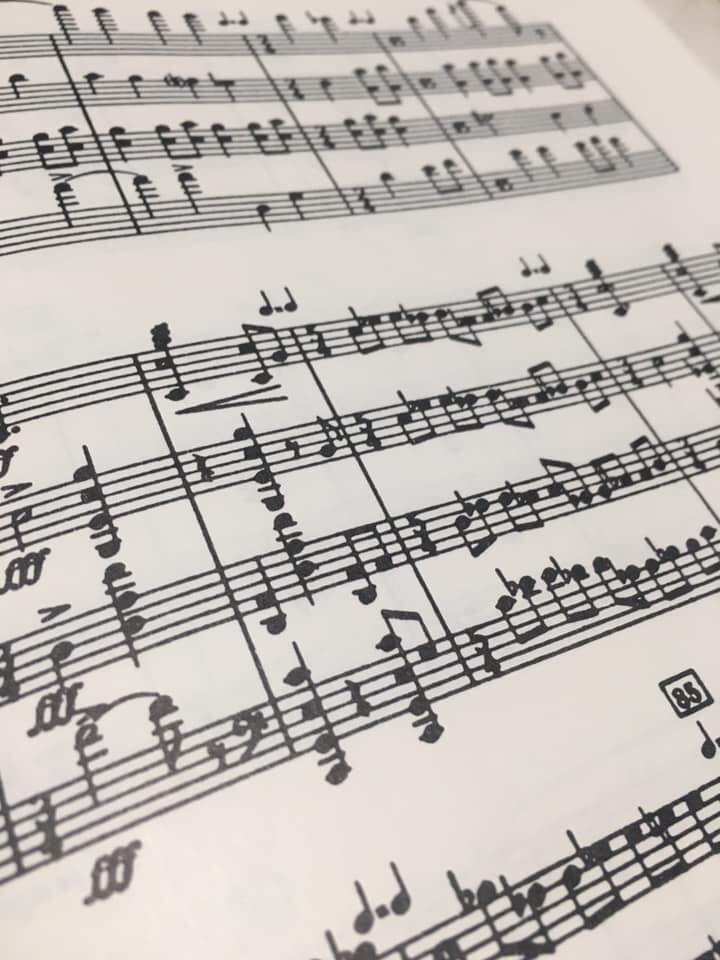
6th July 2020
Shostakovich: String Quartet No. 5
This is another, “for the drawer”, work, written in 1952 but not premiered until late ‘53, after Stalin’s death earlier that year. This is the second of a series of his quartets to be dedicated to the Beethovens; some of his later quartets would see DS dedicate them to individual members of the quartet, in one instance posthumously.
The Yurodivy in DS is prevalent from the start, with a viola line that perhaps is reminding us of someone who is bumbling, or someone who is merely pretending to be (lots of prominent Viola work in this whole quartet; there’s a carrot for our favourite alto clef peeps). Even the smooth warm second theme can’t keep up it’s warm facade, and eventually our opening Viola line is treated to visions of warning and terror. Again, this is not surprising given the terror and purges that were going on at this time in DS’s life. There’s something unnerving and glumly solitary about the icy “cloud register” violin cantilena, with its quiet, almost brutal, pizz ostinato accompaniment (prison bars?) at the end of this movement, which sets up the first of the two segues for this three movement work.
I’m reminded through the 2nd Movement of the stories of DS sitting in the hallway of his house late at night, with his suitcase beside him, ready to “come quietly” as he waited for the police to turn up and take him away, not wanting to disturb his family, who might end up being dealt with as a result of getting in the way. To my mind, there is also an allusion in the middle of this movement to the aria, “Seryozha, my love”, from his, “Lady Macbeth of Mtsensk”, which he would quote later in his 8th Quartet (&, more cryptically, in his 14th as I’ve just discovered). More about this later, but I do have to say revisiting this movement was another “very close to the bone” for me, with its closing violin cantilena, and its attempts at warmth and reassurance, stripped away via the removal of its heart throbbing ostinato, particularly soul wrenching.
“Shaking” itself of the previous movement, the Finale chugs away with some simple-minded Soviet Social Realism, which again wanes as the truth seems to peak through the seams, and we later see the chorales of retribution familiar in the previous quartet return, before struggling back to our bumbling happiness, anticipating as it does a rousing ending.
But, instead we slip into another cold chill, and although the Bb major is attained, it is far from happy. We are left with a foreboding chill, not familiar to the previous two quartets.
Well I’m now a third of the way through the cycle, and it’s been fascinating to revisit these works, and some of my memories associated with them. If you’re “playing along” I hope that you’re enjoying it too.

6th July 2020
Shostakovich: String Quartet No.6
Just before we get started, thank you to those who have been following along. If these posts have inspired you to revisit or rediscover these great quartets then I’m pleased. I might even consider posting these to my website for future viewers. We’ll see.
So down to the 6th Quartet, written in 1956, two years after the death of his first wife, Nina. I’ll also note here that it was not only written three years after Stalin’s death, but also Prokofiev’s, whose music Shostakovich admired, in particular Prokofiev’s last, 7th, Symphony. More about that shortly.
In some ways on the surface this quartet is lighter in tone than those that surround it; certainly less satirical in the 3rd Movement. References have been made to the nursery rhymes present in the first movement. It is one of the only times where DS uses his famous DSCH (D-Eb-C-B) signature in a vertical fashion, having all notes played at once, which he does by having the same cadence repeated at the end of each movement. What’s he up to? Is it answering Social Realist criticisms that he wasn’t finishing enough movements with a “happy” cadence (the signature is considered by some to not necessarily represent DS himself, but his official, Soviet-endorsed, persona. I can’t help but wonder, like the 15th Symphony, that DS is fooling us into thinking that there’s less mischief and satire to this music than there actually is.
…or is it genuine? Is he actually being less satirical than normal- perhaps reflecting on happier times? The 3rd movement whilst sad is devoid of the foreboding and chill that we would assume to associate with such a movement. There’s also a recent precedence to finishing each movement with previous material (apart from the long tradition of Requiems of course), and that is the 7th Symphony of Prokofiev’s, where material from the end of its 1st Movement is found in the closing pages of its last movement, also chirping along somewhat innocently. We know that DS admired this work (“Listening to such works as your Seventh Symphony makes it much easier and more joyful to live.”)
So, on the surface it seems lighter, but the head scratching only starts after you’ve finished listening (and I’ll probably revisit it again, and some relevant texts, for further clarification).
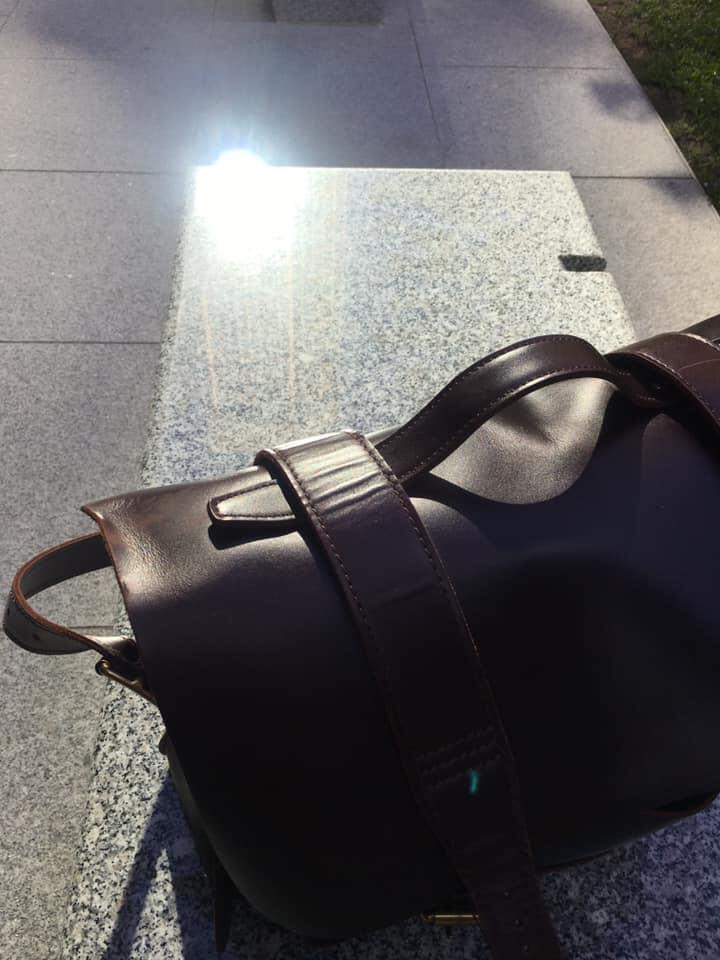
6th July 2020
Shostakovich: String Quartet No.7
Written in 1960, it was dedicated to his first wife, Nina, who had died four years earlier. The shortest of his quartets, there’s nothing particularly mournful about this work. Perhaps the less satirical tone of the previous quartet has more to do with his feelings about her.
This quartet is so short that I felt obliged to listen to it twice. There are betrayal motifs aplenty from the very first bars. With Khrushchev’s “Thaw” in place, perhaps things were comparatively more relaxed. The tone of this work, even the spidery gloom of the 2nd Movement, seems less subversive and foreboding than those that came before it. There are times where it seems playful. Perhaps the work is as innocent as that.
It’s worth noting that this work seems to look more towards the 8th Quartet; this is no surprise when one realises that there were only about four months between the completion of this work and the 8th. But I don’t want to pre-empt my discussion on the next quartet too much, suffice to say that much of the language here- especially in the last movement, which could almost be viewed as an aperitif to the 2nd Movement of the next quartet- seems like a microcosm of what was to come next; that the next quartet took so much “inspiration” from the experience that DS had to lead to its outpouring…
Ok, I’m going to shut up now. I’ll talk about the 8th later. Enjoy this brief, but nonetheless rewarding, quartet, and if you’re just joining me then please go and check out where I started this quartet cycle a few days back. Enjoy x
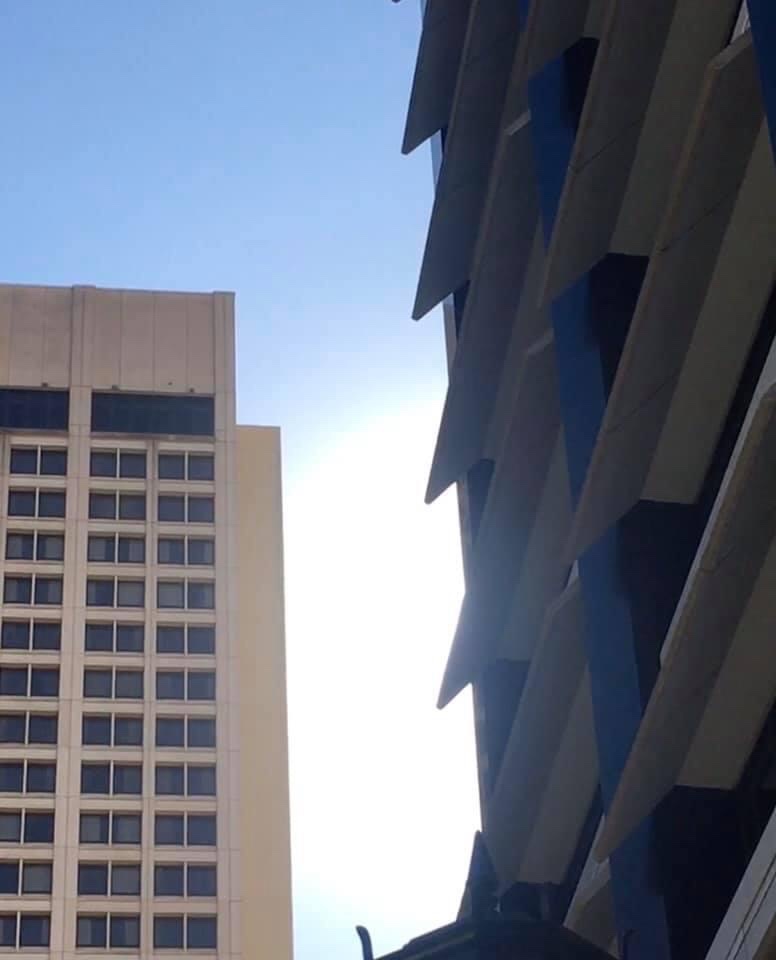
6th July 2020
Shostakovich: String Quartet No.8
Let’s start on a personal note. As soon as I had finished listening to the 7th Quartet, I felt the need to come home to listen to this one; it’s been a long time since I’ve listened to the 8th, and I knew that I might find revisiting it a moving experience. The last time I heard it was in concert about six years ago, and on that occasion I think I had to hold my breath throughout much of it, especially when “Katerina” chimed in with her aria in the 4th Movement. As I sit here at home, I’m reminded that I first heard this work around about 1990, when I bought one of my very first CDs: the Kronos Quartet’s, “Black Angels” album. It’s interesting to note that where I sit now is only a handful of metres away from the first time I ever heard this work, some thirty years ago. Having now sat down and listened to it again, I find myself listening with very different ears to those back then; now more with the overall shape and knowledge of the references involved (and their emotional context here), and not so caught up in the individual moments. It’s just different, that’s all.
So let’s talk about the work. Written within three days, Shostakovich was so affected by what he had seen of Dresden during his visit that year (Dresden, for those that don’t know, was considered a place where the allies had over bombed in WWII). We also see for the first time in his quartets the most pronounced use of the DSCH motif. It has also been said that he wrote this work as an epitaph to himself (the published dedication is said to have been forced onto him). It is filled with much self-quotation (the Lady MacBeth quote that I mentioned above, along with the 1st Symphony, the opening to the 1st Cello Concerto (one of my favourite DS works btw), and the 19th century revolutionary song “Tormented by Grievous Bondage”; further enhancing the epitaph nature of this work is the “requiem” device of returning to the opening material of the work in the last movement (definitely not a Finale by any account). This work differs from the previous seven quartets by starting off slowly, and with some introspection (and therefore nocturnal). Like most of the previous quartets, DS does finish off by floating off into the distance. This time, however, the bitter retribution seems to have been replaced by bitter resignation.
It’s been suggested that Shostakovich’s membership to the Communist Party that year was not something that he took well, and that he was pressured into it, something that his friend Lev Lebedinsky said that he took very badly (Lebedinsky has gone on record to say some rather insightful things about DS, some a little less aligned with current thoughts about DS and his works- such as what he has to say about the 12th Symphony). Again, could the use of the DSCH be more about the public persona that was created for him, and less about the real Shostakovich?
Even if his personal feelings about his membership to the party were initially overwhelming, he did end up using that power to shield other artists who were in more precarious situations than he currently was, perhaps able to empathise with them due to having been in similar situations in his past (such as when Field Marshall Tukhachevsky was able to shield DS from the authorities, when DS was in his twenties). Although they were to eventually fall out with each other, apparently DS was able to protect Solzhenitsyn from persecution on at least one occasion.
I have to say that, for me, I’m not satisfied with the Fitzwilliam’s rendering of this work, and although I did like Kronos’ version back in the day I do remember there being a lot of reverb used. Both have things to offer, but I might have to go searching for another set. Any excuse really!
Thanks for playing. I’ll see you tomorrow.

7th July 2020
Shostakovich: String Quartet No.9
This quartet was written over a three year period, after some revisions, which seems to have been a long writing period compared to some of DS’s other quartets. Dedicated to his third wife, it was completed, along with the 10th Quartet, only months before Khrushchev was ousted as the General Secretary for the USSR in 1964, thus bringing to an end to, “The Thaw”, in Soviet life, and its relative liberalisation of the arts. Both the 9th and 10th Quarters were premiered in November of that year.
It was during, “The Thaw”, in 1962, that DS also wrote his 13th Symphony (“Baba Yar”), with its text containing criticisms about the Soviet authorities (and whose poet found himself under some scrutiny from the authorities as a result. Incidentally, the premiere of the 13th is a story in itself, and if I remember the concert had to advertise something else, resulting in people saying to each other about the premiere, “See you at the Barber [of Seville]”). If we were under any misconceptions that DS felt the urge to relax and forget due to the lessened intensity surrounding, “The Thaw”, then works such as the 13th Symphony should make us think again. A heavy influence on the 13th Symphony is one of DS’s favourite composers, Mussorgsky, and DS spent some time working on his music during this period. Modest’s outlook on politics and life may have been more than usual at the forefront of DS’s mind during this time; he certainly was an influence in the 13th Symphony, and later in the decade in the 14th.
Similar to the 4th Quartet, the 9th starts with a relatively short, uncomplicated, 1st Movement, and in several ways shares its predecessor’s ability to “hide” its major/minor oscillations, perhaps again seeing a portrayal of Socialist Realism (i.e. official “joy”). This “weakening” is what gives both movements their feeling of joy, but with some giddiness.
In the 3rd Movement, we see our “betrayal” motif again in abundance, after a mournful (but not necessarily nocturnal) 2nd Movement. Some have wondered if this betrayal rhythm has a close connection with Rossini’s, “William Tell”, overture, which DS would eventually make reference to in his 15th Symphony. I’m not so sure, as you could then refer the connection to many other works of DS (or even, laughingly and anachronistically, the opening of Mozart’s 40th Symphony. I’ll bet you’ll never think about it the same way again).
Like the 1st Movement, the 4th features repeated stepwise oscillations, but also combined with the coldness of the 2nd. The many featured pizz. chords only add to the feeling of some sort of solitary lamentation being undertaken, and combined with the stepwise oscillations it does feel as though we are waiting apprehensively for something. As it turns out we don’t have to wait for long, as the 5th Movement barges in, complete with the betrayal motif once more. Despite a return of the silence and pizz. chords of the 4th Movement, this quartet doesn’t fade away like many of its predecessors, rather charging to the end, complete with the return of the stepwise oscillations, rounding off with a prominent motif from the 1st Movement.
I can’t help but wonder here, as with many of DS’s later works, that the perspective has changed. Perhaps due to the influence of Mussorgsky, rather than being “right in the thick of the action”, as we were in many of his early works (say, the 4th Symphony’s outer movements; being in the middle of the crowd of the 1st, being among the delegates in the 2nd, in the cold, silent hallway in the 3rd, and cheering unnervingly in the 4th Movements of the 5th Symphony), here in the later part of the composer’s career, we are watching a scene play itself out from our vantage point at the side (or, behind the lens, rather than in front of it), observing a morality play, which we are going to spend the next week reflecting upon, perhaps with some futility.
Thanks for watching. This was another one that I had to listen to a couple of times again, and well worth the repeated hearing. I hope that you enjoy this work, and the previous ones x
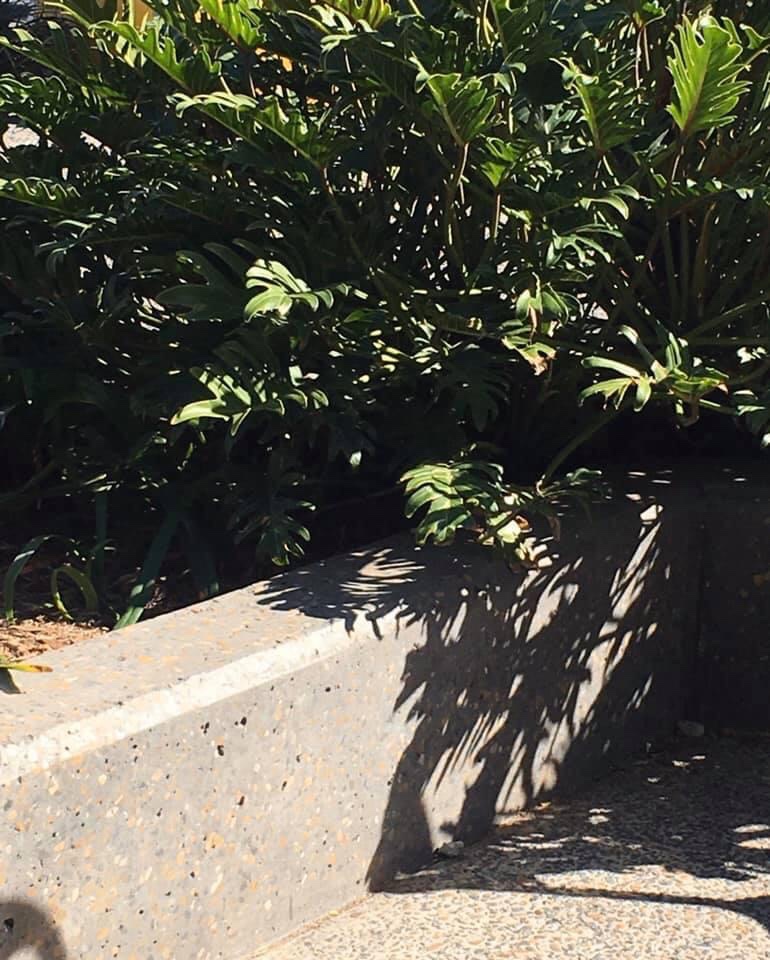
7th July 2020
Shostakovich: String Quartet No.10
From a historical context, I’ve probably covered quite a bit already in relation to the 9th Quartet. I should point out that this one, written in 1964, was dedicated to fellow composer Mieczyslaw Vainberg (1919-1996) who, in turn, dedicated his 12th Symphony to DS.
We return to a traditional four movement format with this quartet, with development sections present in the first (and, as usual, in the fourth).
Something that does come to mind with this quartet and its predecessor: there’s an absence of the chilling, nocturnal, movements in both works, replaced instead with slower moments of public lamentation. With the Stalinist purges well behind him, and their persecution of anything sounding remotely tragic, did DS feel comfortable enough to express his lamentations more openly, rather than those emotions being wrapped in fear, silence, and retribution.
What I find interesting in the last movement is the transformation of the “betrayal” motif, which up until the previous quartet had been detached in articulation, and often only executed on a single tone. Only touched on briefly in the previous quartet, here we see the 4th Movement open with, and be permeated by, the figure including a slur between the two quavers, the second quaver being a neighbouring tone, more often the semitone below than the note above. This adaptation of the motif finds itself in other works, such as two years later in the Second Cello Concerto (an obvious example from that work comes to mind, right at the very end of the work; the soloist uttering this new branded motif whilst the clockwork percussion go about their business). The similarities here (and in the Second Celli Concerto) between the motif and the opening of Strauss’ Radetzky March are striking, and whilst it does beg some questions, I am aware of what I said about the similarities between the motif’s original form and the William Tell. On that score I shall politely take a “glass of shut the hell up”.
For the moment, I cannot recall the 11th Quartet, but with its composition two years after the ending of, “The Thaw”, and a return to more conservative times via Brezhnev- and the subsequent suppression of the arts- I can’t help but wonder if we will see a return of DS’s night music, or perhaps an even stronger exercising of DS’s satirical bone. We’ll see x

7th July 2020
Shostakovich: String Quartet No.11
This enigmatic work, composed in 1966, required a second hearing. With the rise of Brezhnev post 1964, and with him an ushering in of more conservative views about the arts, it comes as no surprise the subdued, solitary tone that is present in this work. There are also some downright angry moments, such as the outburst in the 3rd Movement, shortly followed by a return of the chorales of retribution, familiar back in the 2nd to 5th quartets.
But it’s also worth pointing out a couple of other things. The work is the first of four quartets dedicated to individual members of the Beethoven Quartet; on this occasion its dedicated to Vasili Shirinsky, the ensemble’s Second Violinist, who had passed away the previous year in 1965.
What is missing is any form of satire, the “betrayal” motif absent through its seven movements. It is a bleak, at times foreboding, work. But don’t let that put you off, as it is far from being monochromatic. It has plenty that is original to say, most of it “indoors”. Again there are times- especially in the final movement- where I feel that we are once again on the other side of the lens, being given a vantage point to observe a parable unfolding.
To my shame, I just can’t recall a note of this quartet from when I last heard it. To revisit this cycle, and to discover this shortcoming on my part, is why you should never underestimate the power of music to humble, to educate, and to help (re)learn the significance of empathy x
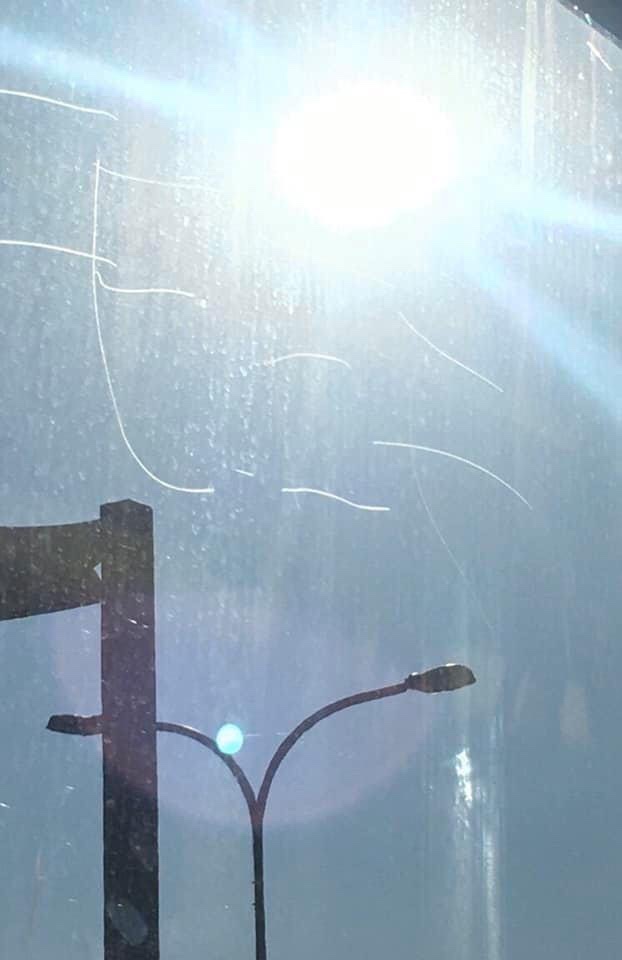
10th July 2020
Shostakovich: String Quartet No.12
With the 12th Quartet we are well and truly in the language of DS’s late period. I’ll admit that I’ve now relistened to this quartet several times over the last few of days, and have revisited an old “friend” of mine to seek more information. More about that “friend” later.
From 1966 onwards (perhaps due to his age and ongoing illnesses), DS started to really meditate on the metaphysical, on life and death, and acknowledging that his later years were not dissimilar to those of Beethoven.
Finished in 1968, the 12th Quartet is the second dedication to an individual member of the Beethoven Quartet, this time the quartet’s First Violin, Dmitri Tsïganov.
Taking advantage of the number of the quartet, DS includes a twelve tone row, which, from the very start, would be stated periodically throughout the 1st Movement, and make an impressive return at the end of the 2nd Movement. Also present at the start, and elsewhere, are the oscillating steps from the 9th Quartet, although this time not as static as they were in the earlier quartet.
Regardless of its twelve tone start, this isn’t a dodecaphonic work, but rather a twelve tone theme, which avoids the traditional DS development treatment. A similar twelve tone passage is noted at the end of DS’s 13th Quartet. From a technique point of view, DS’s use of tonal ambiguity is similar to that of Liszt’s opening twelve tone theme for his Faust Symphony (of course Liszt would have no idea as to what dodecaphony was). In a similar fashion to the Finale of Mahler’s 7th Symphony, it’s been suggested that the twelve tone theme is present in the quartet as a satirical tool, more to confound the critics (“for Rollo”, as Ives would put it). Given the darkness of its return at the end of the quartet, I’d probably go so far to say that if there is any tongue in cheek to be had, that it confines itself to the 1st Movement.
Whilst the latter period would see moments of pure rage in DS’s music- such moments, complete with forced, dissonant, sustained chords as found in the 10th and 11th Quartets- they are surprisingly not present here in the 12th. There are angry, protesting moments (the flattened submediant of retribution present in the quartet’s 2nd Movement’s gloomy middle section), but not the pure rage that we see in other works of DS’s late period. Also present through the 2nd Movement’s middle section is a dotted quaver/semiiquaver motif that would become prevalent, and retain itself funebre overtones, in the 2nd Movement of the 15th Symphony.
Novel in form and in effect (novel also in the string effects, such as the ponticello that we first heard back in the 10th Quartet, now more present here), it’s been a joy to revisit this quartet, complete with it nocturnal, beyond the grave, moments, its protestations, and energy. Whilst I always enjoy the late period of DS, it is an area that I not only need to revisit again, but further explore.
See you for the 13th.

10th July 2020
Shostakovich: String Quartet No.13
This one movement work is, for me, a very close to the bone, moment. It’s solitary, hushed lament, breaking into full cry, drips with tears built from decades of anguish. Even when it starts to increase its pulse it never seems devoid of its nocturnal, anguished, spidery lined, thoughts. The betrayal motif is evident as we start to get that pulse going, and the unison “shouts” seem to talk of moral outrage. The “tapping” is unnerving (whipping us into a frenzy?), and would return at the very end of this work. Similar tapping would, just as chillingly, revisit us in the 15th Symphony in the following year.
Written in 1970, this quartet was dedicated to the Beethoven Quartet’s violist, Vadim Vasilyevich Borisovsky, who retired from the quartet just prior to the works premiere. Written in ternary form, eschewing the normal quartet format once again, we’re once more in the presence of squeezed, static, dissonant chords; an expression of rage not quite as toxic as some of its predecessors, perhaps more intent on pointing out the subject of the outrage than the expression of it (again, that feeling of being behind the lens for our view, rather than in front of it). Unlike its immediate predecessor, we fade off at the end- that is until the very last note of the work which comes forth carrying ghosts to chill from the grave.
Such a quiet work, that only builds up a slight portion of warmth at times, and with so personal a tone, this part of DS’s career has been compared to Noh theatre; at times the cold, uncomplicated manner of its tone is totally overwhelming.

10th July 2020
Shostakovich: String Quartet No.14
First, a correction: whilst I mentioned that the premiere of DS’s 13th Symphony has a story all of its own, worthy of comparison to the premiere of Le Sacre, I had mistakenly mentioned that its performance could not be advertised. Rather it was DS’s revision of, “Lady MacBeth of Mtsenzk”, now known as, “Katerina Ismailova”, and premiered in 1967, that was advertised as Rossini’s, “The Barber of Seville”. There you go. The next round of lattes is on me.
Compared to its predecessor, the 14th is a much more public affair, and comparatively dripping with lyricism, especially in its 2nd Movement.
Written over 1972 and 1973, this was the first quartet to be premiered during my lifetime (there you go, the cat’s out of the bag), started during a visit to the UK when DS went to visit Benjamin Britten. Contemporaries to each other, both composers also happened to contemplate similar subjects in their later works. This quartet is also the last work dedicated to a member of the Beethoven Quartet, this time its Cellist, Sergei Shirinsky. Sadly, this would be the final quartet that he would premier of DS’s, as he died during the preparations for the premiere of the 15th Quartet, in 1974, making this also the last quartet to be premiered by the Beethoven’s, who had to step aside from the premier of the 15th as a result. The work returns to a more “standard” format, with three movements present.
By this stage of DS’s life we are well into Brezhnev’s reign, which had begun in 1964 by pulling back on the artistic freedoms of Khrushchev’s, “The Thaw”, and returning to more pro-Stalinist times. It’s during this period, which would last well past DS’s life until Brezhnev’s death in 1982, that dissidents were dealt with by sending them to psychiatric hospitals, thus bringing to life one of the more chilling prophecies of Orwell’s, “1984”. Alcoholism, corruption, and mediocrity were also sadly rife. No doubt some of this became subject matter for DS’s late works.
To my ears, the quartet’s 1st Movement seems to share melodic and development lines similar to those found in the 1st Movement of the 3rd Quartet of 1946, although with less satirical flavour than the earlier work. The 2nd Movement is perhaps one of DS’s most lyrical moments in this final period of his life. The “beauty” of the duet between cello and violin in the middle of this work says less about beauty, and more about the naked bitterness that tries to wrap itself around the two lines. Unsurprisingly, we soon return to the grey that started this movement. The gloom here is (and if you’re playing a drinking game and waiting for me to say this again) unnerving, and moving to the point of inducing one into liquid form. The betrayal motif takes us out, and leads us over to the final movement.
Once at the 3rd Movement we are on faster turf. The material and gloom present here seem not too far away from the Finale of his 2nd Quartet; both movements present two note motifs being thrown around the ensemble as some sort of mordern hocket. This movement eventually builds momentum before a brief moment of pause, which then leads us into a final section that seems at times chameleon like in its ability to change its tone, alternating as it does between moments of rhythmic agitation, and moments of almost sneering like idealism and sentimentality- especially so when our duet from the 2nd Movement returns to haunt us with its insincerity (or its naked truth, depending on your point of view). Eventually after much dialogue with the betrayal motif, we drift off peacefully, but knowing full well that the lord of jesters/Yurodivy hovers above- smiling down- seeing right through the idealistic facade that we slumber through.
Well, we’re close to the end now, and I think I’ll pick on the final quartet tomorrow, and perhaps follow that up with en epitaph post. See you then x

10th July 2020
Shostakovich: String Quartet No.15
Well here we are at DS’s final quartet. I was going to leave this for tomorrow, but I got a bit of energy to carry on- for which I’m grateful for, as it has allowed me to think more clearly about some of the relationships between this work and some of DS’s others.
Finished whilst in hospital in May, 1974, the 15th Quartet was premiered later that year by the Taneyev Quartet for reasons explained in my previous notes on the 14th Quartet. Along with the 1st, these are the only two quartets of DS not to have been premiered by the Beethovens.
We don’t see fugues too often in DS’s quartets (the 11th Quartet comes to mind, but is curtailed fairly quickly), so it comes as a surprise to see it here in the opening Elegy, filled as it is with introspection. The lyricism of the 14th seems to have made its way into this work as well, and if it is not as pronounced as it’s predecessor, then it is because it is striving towards differing aims to the 14th.
As we move to the Serenade, we see the squeezed, sustained notes that were so present in the 13th quartet, before we settle down into the Serenade proper, lilting as it goes along.
Despite its name, the following Intermezzo is far from light, with its brief existence bursting with anger, before chillingly settling back down, to lead us into the Nocturne. Here, as in the opening Elegy, the lyricism is outer worldly, very much a Requiem in tone. Uttering quietly the funeral (dotted quaver/semiquaver) motif that was present in both the 12th Quartet and 15th Symphony (and, very soon, the Viola Sonata), this leads us into the Nocturne and, eventually, the Funeral March.
It’s interesting to note the absence throughout of the betrayal motif. Perhaps at this stage, knowing that his time must be coming soon, he may have had more important things on his mind than external betrayal.
As we move into the Epilogue, we see the return of the stepwise oscillations, although now pressed into a faster tempo than seen in any previous quartets. The chilling trilled pedal points dissipate, and we eventually return to the funeral Nocturne theme, interspersed now with stepwise oscillations (now hushed, and for the first time we also hear them bowed instead of slurred, and now also harmonised- the ascension of DS to the other world?), declaring, cold, pizz chords, and further trilled pedal points (in some ways, the use of these quiet trilled pedal points is similar in tone to those used in the 1st Movement of DS’s 6th Symphony (also where, interestingly, where we see numerous examples of the dotted quaver/semiquaver motif) and, again, the 2nd of the 15th Symphony). With the emergence of a final chorale, we are ushered into the ether; the viola providing us with a final trilled pedal point, warning us to take heed as we head away.
…and with a whimper comes to an end one of the most important quartet cycles in the 20th Century.
I’ll be back shortly with an Epitaph x
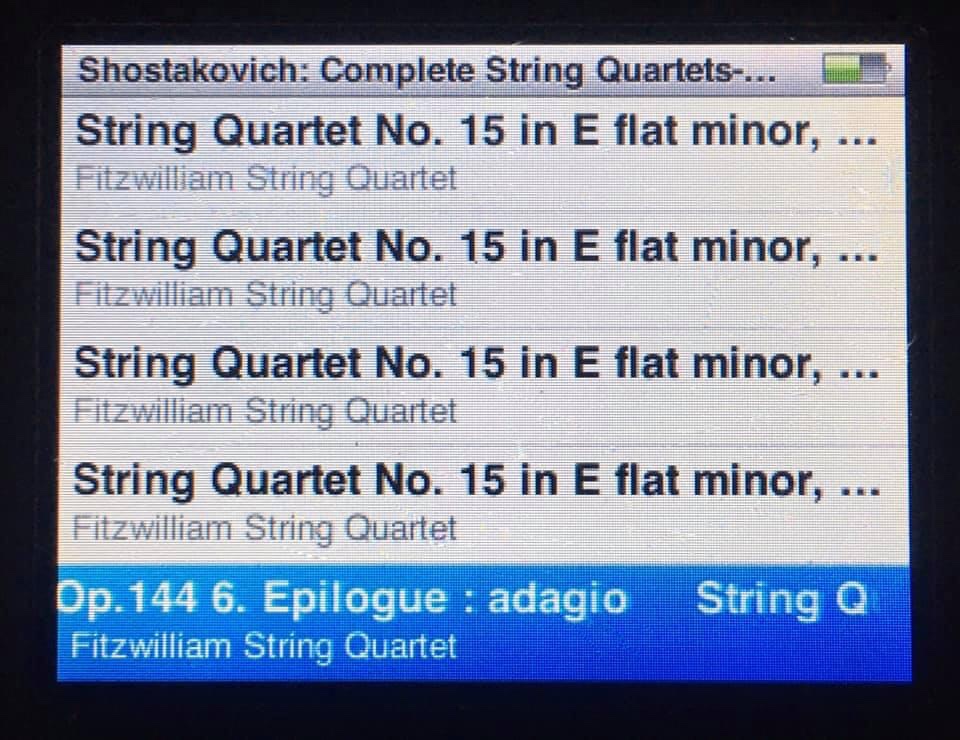
10th July 2020
Shostakovich: String Quartets- Epitaph
Now is as good as any time for a very long throw back to twenty-six years sgo, where you could say all of the trouble started. But before we get to that, thank you again for those who have been following along. I hope that you have got something out of all of this, and I may gather all of the relevant posts from this last week and place them on my website for further reflection, research, and discussion.
Ok, now to the throwback. Get a drink, get comfy, and I’ll explain how on earth someone like me got interested in a genre that I will never have the possibility of performing in myself, and in particular the quartet cycle of Dmiitri Shostakovich.
Having completed my undergrad degree at the end of ‘93, I found myself going straight into three months of basic training only a handful of months later- in early ‘94- being posted to HMAS Cerebus where, regardless of which generation of Defence Force member you come from, it is generally agreed that it is the precise location of where hell freezes over.
Close to the end of my basic training, and venturing up to stay overnight in Melbourne during a weekend off to get away from the starched uniforms, saluting, and encouraged yelling, I chanced upon Ian MacDonald’s book whilst browsing in a bookstore. Up until then my interest in Shostakovich had been moderate (I remember a fellow student, whose compositions were littered with DS-esque harmonies and brooding, grabbing me from upstairs, to come down to the music library, and listen to the giddy fugue that lies in the middle of the 4th Symphony’s 1st Movement). Published in ‘91, the book was conceived during the wake of Volkov’s, “Testimony”, which put the cat amongst the pigeons with regards to how history up to that point had concluded DS’s relationship and alliances with the Soviet authorities. Getting a straight answer out of DS’s friends and acquaintances was never going to be easy during the 80’s, even for emigrés who had family still living behind the Iron Curtain. The book’s promise of unfolding the other, “real”, life of DS was a relevation to me, and although I can’t say that I now know all of DS’s works, by the time I had read and reread the book over the course of six or seven years I knew many more of them, the political climate within which they were written, and the code language that he used (and, more importantly, why).
Not long after that first read in ‘94, the opportunity to get the Fitzwilliams box set of the quartets came about (courtesy of a visit to the local HMV store, when a heady pleasure back then (and lost here in Australia) was the ability to browse in a music store), and from then on a gradual accumulation and discovery of the symphonies, etc. Acquiring a copy of Volkov’s, “Testimony”, was of course a natural eventuality, and several other books- Elizabeth Wilson’s, “Shostakovich. A life remembered”, is still as much of an essential read as it was back then, filled with its various first-hand accounts from friends and acquaintances. Again, you have to take every piece of information with a pinch of salt, because you’re not always aware if there is an innocent, third party, being protected. It has been known for highly respected parties to change their account, especially when the political climate has changed. This mix of music and political intrigue, to a younger version of me, was highly intoxicating.
Whilst DS has not been a composer that I have spent a lot of time living with recently, to some degree that may now change. Quickly going through this cycle has reminded me of my earlier toil and enthusiasms- or enthusiasms that I had forgotten were important to me. Oddly enough, I’ve heard it said by others that the pandemic has afforded them an opportunity to investigate things that they had hitherto not had the opportunity to explore. Whilst most of the last six months have been a whirlwind for myself and many of my colleagues, I am grateful that I’ve had more time recently to rediscover these fifteen works, which have now planted a seed within, to drive me to look for parallels.
It’s hard to believe that my poor, battered, copy of MacDonald’s book is twenty-six years old. After this week there might be time put aside to rediscover its inner treasures, although I’ll have to be extra careful with it, as I discovered a couple of days ago when its pages started to have a life of their own!
Thanks again for watching. Brief as this rewarding journey has been, it has been an intense, emotional, blast for me. I hope that you have been inspired, and that you have enjoyed it, too.
Stay safe xx
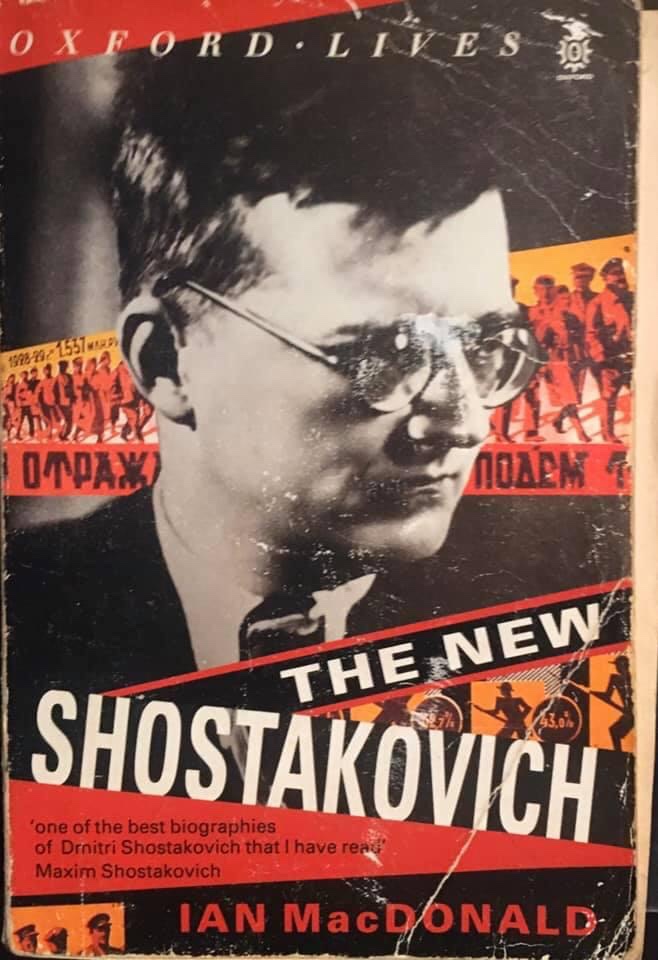
You must be logged in to post a comment.